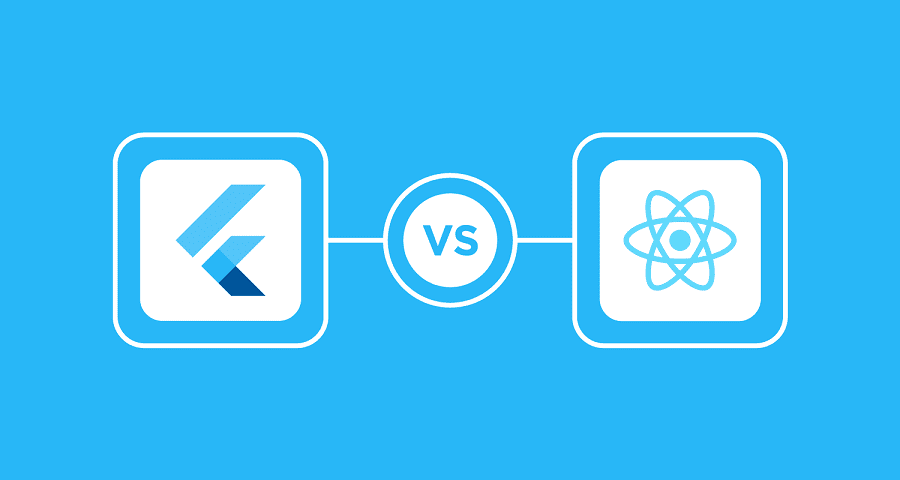One of the most important parts of bringing a great app idea to life is understanding how to use an optimized app development process. At Split Reef, we stay up to date with the trends so that we know how to best use platforms that enable us to create the best work for our clients and offer quality development.
Flutter and React Native are tools developers use to create cross-platform applications. They both have attributes that make them appealing and understanding the pros and cons of each can help create the best final product. Let’s take a look at Flutter and React Native to see which has the best attributes for cross-platform development.
What is Flutter?
Flutter is a cross-platform web development tool that uses the Dart language. In 2017, it was created by Google to address some of the downfalls associated with React Native development. One of the main highlights of Flutter is that it allows coders to use one codebase for environments like mobile development, desktop app development, and web development.
What is React Native?
React Native is an open-source framework that uses JavaScript. It is comparable to Flutter in many ways, but it has some distinct features that make it stand out. React Native came out in a stabilized form in 2015, and it was created by Meta. The scaleability of React Native allows developers to use it for cross-platform app development of any size. Due to how well-known JavaScript is, React Native is a desirable choice for developers who already know JavaScript.
Some apps that have been designed using React Native include Facebook, Instagram, Skype, Wix, and Pinterest, just to name a few.
Flutter vs. React Native in the Future – Which one is Better for 2023?
Determining the best tool for the future comes down to what makes each tool stand out and what makes them less desirable. These pros and cons highlight why developers like each tool and what downsides may come when using each tool.
Flutter enables developers to do half the testing that they would otherwise do. Flutter’s hot reload lets developers develop apps much faster. Flutter also allows a single codebase for several platforms. Additionally, all versions have the same UI. Flutter also includes a useful native 2D graphics library.
These qualities highlight what makes Flutter so efficient for many developers, but some downsides of the tool include Flutter not having as many libraries or as much support. The community is also smaller because it is a newer tool than React Native. Additionally, the platform depends on Google to maintain the project, but the chances of Google abandoning Flutter aren’t great, given the history of updates and continued interest in Flutter. As Flutter continues to grow, many of these issues will begin to resolve themselves.
While Flutter uses Dart, React Native uses JavaScript, a much more well-known programming language. Javascript is compatible more widely as a programming language than Dart because of how developed Javascript is.
The ease of getting started in React Native is one of the main draws. Like Flutter has a hot reload, React Native has a fast refresh, which makes it easy for developers to edit code and see the results right away. Reactive Native also has a single codebase. React Native has had more time to develop, which gives it the advantage of maturity and a bigger community. It can also be easier for developers to learn.
While there are many good attributes to React Native, it is not perfect. React Native requires you to customize UI elements, as it only gives you the basic ones. Furthermore, it has an unstable UI. Unfortunately, it also uses many outdated resources in the libraries that have been built as React Native matures.
Both frameworks have appealing elements and some drawbacks, but what framework speaks to the future of app development?
Is Flutter the Future of Mobile App Development?
Flutter appears to have a strong future in mobile app development because it is becoming more popular, and it has become more used than its leading competitor, React Native. The future will depend on updates by Google and how the framework matures, but it is unlikely to go anywhere soon.
Why Flutter is the Future of App Development?
Developers tend to favor Flutter over React Native. Research from 2021 suggests that while 38% of developers preferred React Native for cross-platform applications, 42% of developers preferred Flutter. As the number one tool for cross-platform applications in the market right now, Flutter stands to be a relevant tool for years to come.
Why Do Mobile App Developers Love Flutter?
Mobile app developers love Flutter because it enables them to develop quickly and with ease. It is supportive to developers, which is why it is the top tool for cross-platform apps. Many companies have turned to Flutter. Google, Alibaba, and eBay have all used Flutter for the development of some of their apps.
Does React Native Have a Future?
The future of React Native is uncertain. While it is likely to remain prominent in the immediate future, within the past few years, Flutter has already surpassed React Native in popularity, but Meta and Google are both continuing to update and support their respective frameworks. Thus, React Native still has a place in web development.

Split Reef is a modern, results-driven digital organization always ready to support clients in their search for digital supremacy. With Split Reef, your budget isn’t going to hold you back from partnering with us to make your project successful. Our offices are located in Columbus, Ohio and Jacksonville, Florida.










